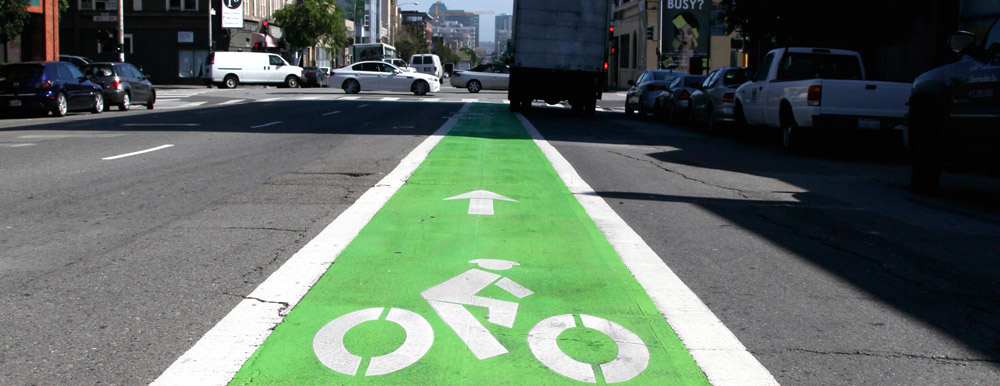Ever wonder why it take so long to get a bikeway on the ground in San Francisco? The desperately needed bikeways on Fell and Oak Streets took ten years to get in the ground (and they’re still not complete; permanent planters will replace soft hit posts). The many year process to get a crucial safety improvement can be agonizing and requires a lot of steps. This drawn out process is one of the key reasons why the SF Bicycle Coalition’s work is so important, and why we need a strong membership base to support our work to ensure bikeways get on the ground. Here’s how it works, and how you can get involved in getting that bikeway on the ground:

Just an Idea
The SF Bicycle Coalition works with members, residents, business owners and community leaders to get the ball rolling on street improvements. Know a street or intersection that needs improvements? Recommend it at sfbike.org/connectingthecity.

An Idea but not a Project
Once we’ve formulated the idea, we make the case.This process involves petitions, letters to decision-makers and meetings with neighborhood groups, community leaders and District Supervisors. Your role: signing letters, emailing your Supervisor, joining our member-led project group.

It’s a Project!
The City agrees to take on the project, adds it to the budget and creates a timeline. The SF Bicycle Coalition keeps track of this project and makes sure the City doesn’t drop the ball on it.

Data Collection
The City looks at possible options, researches the streets, collects data and compares the project to similar projects.

Public Planning and Outreach
The City holds a series of public meetings of various sizes and audiences. This is where we need your action! Come to the meetings and show your support. Often, people opposed to the project come to the meetings and try to derail the project.

Pilot of the Project
Sometimes the City tests a project out as a pilot first. Pilots are a great way to test out a design and demonstrate the value of the project. Plus, pilots don’t require lengthy review processes, so they get on the ground faster, like Folsom Street.

Environmental Review
This lengthy Environmental Impact Report (EIR) can stall or derail projects. It was an EIR lawsuit that created an injunction on all bike projects in 2009. We work to make sure that all the processes leading up to the EIR include strong support so that this process moves more easily.

Approved by City Agency
Once the EIR is complete, the project moves on to a City Board for approval. These hearings have public comment, and we rely on members to speak up in support. At the Masonic Avenue hearing, dozens of members spoke up and this project was unanimously approved. That’s effective grassroots action!

Design Finalized
We’re almost there. After approval, the SFMTA makes a detailed engineering design. We work to ensure that this process moves along and that the project doesn’t get delayed, and make sure that key safety aspects like green paint don’t get dropped from the plans.

On the Ground!
Hooray — the project is underway! The City grinds away old paint and implements the project. We make sure that you have a safe way around the construction and that it moves along without delay. Then we celebrate!
*But wait, there’s more. Even if a project is approved, it still has to be funded. This is a multi-step process and the SF Bicycle Coalition works to ensure that the City prioritizes funding these crucial safety projects.


